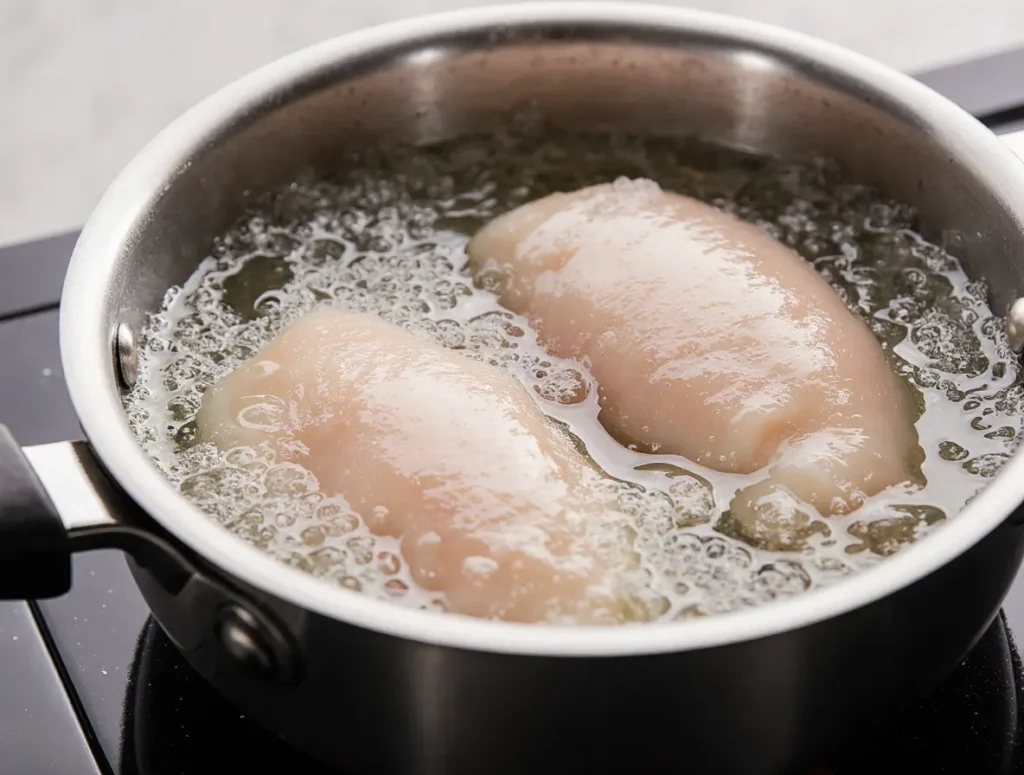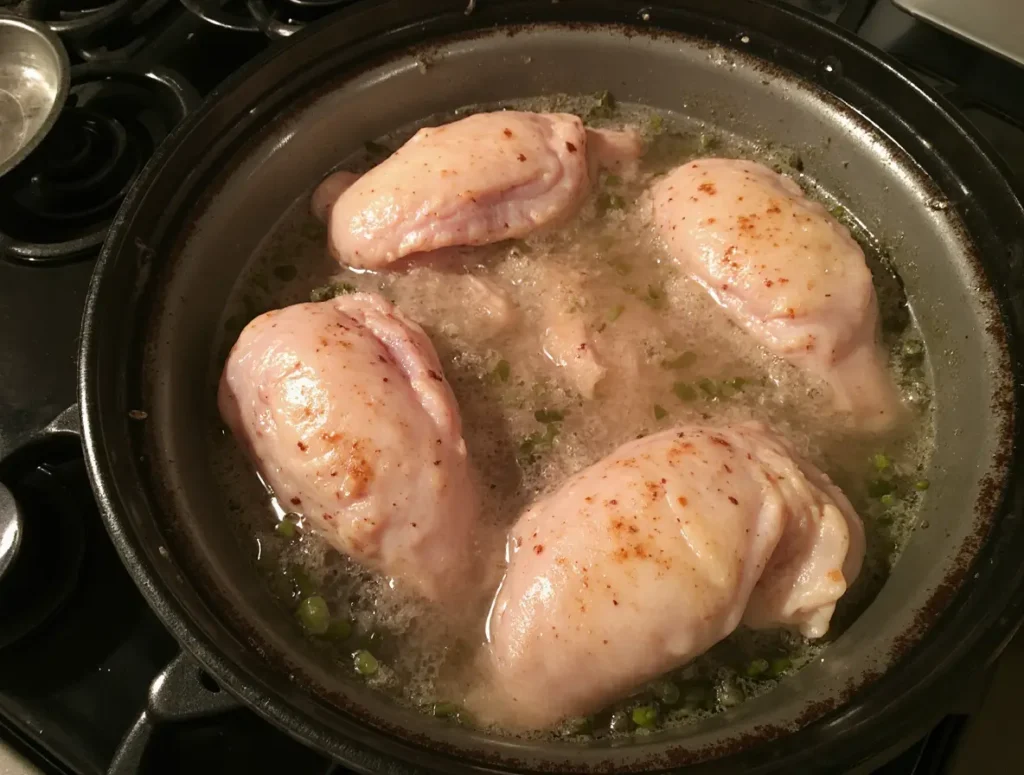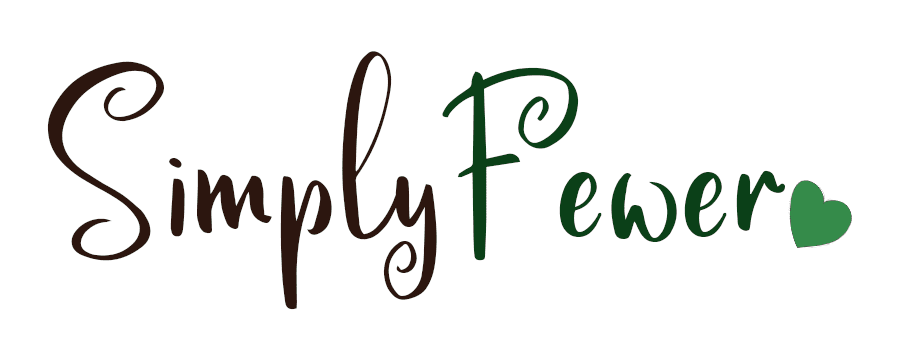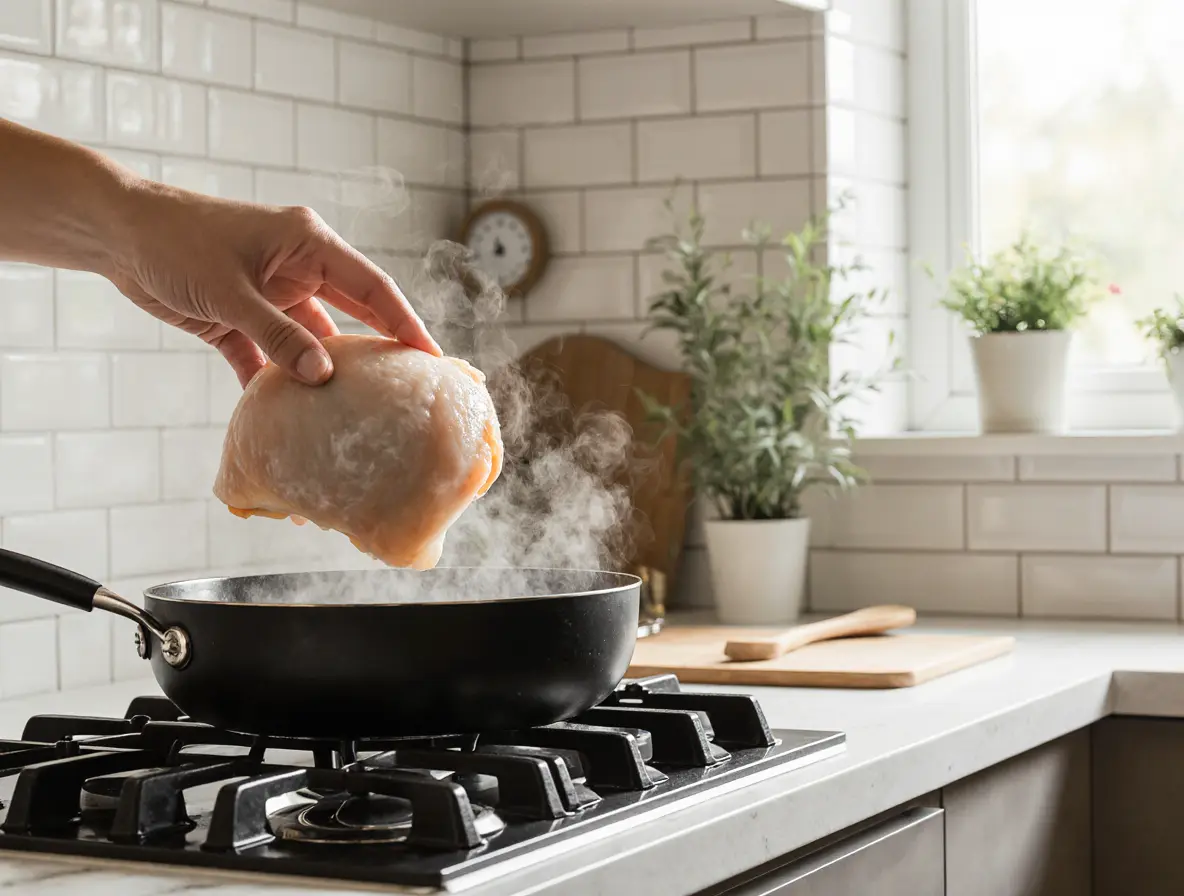Why Boiling Chicken Breast Matters
Boiling chicken breast might sound like the most basic cooking task ever—but don’t be fooled. Knowing how long to boil chicken breast can be the difference between a juicy, tender meal and a rubbery, bland disappointment. Whether you’re meal-prepping for the week, whipping up a chicken salad, or making soup from scratch, learning the timing and technique is essential.
Think of boiling chicken like making tea: steep it too long, and it gets bitter; pull it too early, and it’s just hot water. The sweet spot makes all the difference. So, how do you hit that perfect mark with chicken every single time?
Let’s break it down step by step—simple, clear, and no jargon.
Table of Contents
How Long to Boil Chicken Breast on Average
Generally, boiling chicken breast takes between 12 to 18 minutes—but it depends on the size, thickness, and whether it’s fresh or frozen. Here’s a helpful guide:
- Boneless, skinless chicken breast (fresh): 12–15 minutes
- Boneless, skinless chicken breast (frozen): 18–22 minutes
- Bone-in chicken breast: 30 minutes or more
Always bring your pot to a full boil, then reduce to a gentle simmer. This not only preserves flavor but prevents overcooking. And don’t forget: the internal temperature should always reach 165°F (74°C) for safe eating.
Picture this: if you’re baking a cake, it’s not just about putting it in the oven—it’s about knowing when it’s done. Boiling chicken is exactly the same. It’s less about watching the clock and more about watching for the signs.
The Right Way to Boil Chicken Breast
Boiling might sound like “just throw it in water,” but there’s a right way and a better way. Here’s how to get tender, flavorful results every time:
- Start with cold water: Place the chicken in the pot before adding heat. This ensures even cooking.
- Add aromatics: Toss in a pinch of salt, a few peppercorns, garlic cloves, bay leaf, or even sliced onion. This infuses flavor.
- Boil, then simmer: Bring to a boil over high heat, then reduce to low and let it simmer.
- Skim the foam: If any gray foam rises to the top, skim it off with a spoon.
- Check doneness: Insert a meat thermometer into the thickest part. Look for 165°F.
It’s kind of like giving your chicken a spa day—it’ll come out relaxed, juicy, and much happier (and tastier!) than if it was thrown into a rolling boil without care.
Signs Your Chicken Breast Is Fully Cooked
You might be tempted to poke it with a fork and guess, but let’s aim for precision. Here’s how to know it’s done:
- Internal temperature is 165°F
- Juices run clear, not pink
- Meat is firm, not rubbery or jiggly
- No pink color inside when sliced
Still unsure? Slice it in the center. It should be white throughout. If you see any pink, put it back for a couple more minutes. Think of this like checking if cookies are golden brown—it’s all about the details!
Common Mistakes to Avoid
Boiling chicken sounds easy, but a few missteps can ruin the texture and flavor. Here are the most common pitfalls:
- Overcooking: This dries it out. Stick to timing and temperature checks.
- Starting with hot water: Uneven cooking is the result.
- Boiling too hard: A rolling boil toughens meat.
- Skipping seasoning: Even a pinch of salt and pepper makes a difference.
- Cutting too soon: Let it rest for 5–10 minutes to retain moisture.
Imagine your chicken is like a sponge—if you squeeze it too soon (cut it right away), all the juiciness escapes.
Boiling Fresh vs. Frozen Chicken Breasts
Yes, you can boil chicken straight from the freezer—but it will take longer and needs extra care. Here’s a quick comparison:
| Chicken Type | Boil Time | Tips |
|---|---|---|
| Fresh Breast | 12–15 min | Simmer gently, not boil |
| Frozen Breast | 18–22 min | Add 3–5 minutes extra |
| Bone-in Frozen | 30–35 min | Use thermometer to be sure |
Always make sure frozen chicken reaches 165°F in the thickest part. Use a digital thermometer for peace of mind.

How to Add Flavor While Boiling Chicken
You don’t need a spice rack full of magic—just a few simple tricks to boost flavor:
- Salt and pepper: Basic but essential
- Aromatics: Onion, garlic, celery, bay leaves, or herbs
- Acid: A splash of lemon juice or vinegar brightens it up
- Broth instead of water: Huge flavor upgrade
It’s like turning a glass of water into soup—small changes make a big difference.
What to Do With Boiled Chicken Breast
Once boiled, the possibilities are endless. You can:
- Shred it for tacos or salads
- Slice for sandwiches
- Dice into soups or casseroles
- Add to pasta or grain bowls
Think of it like a blank canvas—boiled chicken is neutral, flexible, and ready to soak up sauces, spices, and creativity.
Storing and Reheating Boiled Chicken
Boiled chicken is meal-prep gold. Here’s how to store it properly:

- Fridge: Store in an airtight container for up to 4 days
- Freezer: Freeze in bags or containers for up to 3 months
- Reheat: Gently in the microwave or on the stovetop with a splash of broth or water to keep it moist
Always reheat to at least 165°F again before eating.
And remember: if it smells off or feels slimy, toss it. Better safe than sorry.
Conclusion: Simple Steps to Chicken Confidence
Boiling chicken breast isn’t complicated—but doing it well takes just a bit of care. Follow these guidelines, check the temp, and use some flavor tricks, and you’ll never have dry or bland chicken again.
Think of it like learning to ride a bike: tricky at first, but once you’ve got the balance, you’re golden.
Next time you wonder how long to boil chicken breast, you’ll have the confidence—and the thermometer—to get it right.
FAQs About Boiling Chicken Breast
1. Can I boil chicken breast with bones in?
Yes! It will take longer—usually around 30 minutes—but adds more flavor to the water (hello, soup base!).
2. How do I keep boiled chicken moist?
Simmer gently, don’t overcook, and let it rest before slicing. Storing with a little cooking liquid also helps.
3. Is it healthier to boil chicken than fry it?
Absolutely. Boiling uses no oil and retains more nutrients, making it a healthier option overall.
4. Can I reuse the water after boiling chicken?
Yes—strain it and use it as a basic broth. Add veggies or seasoning to boost flavor.
5. Can I boil chicken breast in advance?
Definitely. It stores well and is great for meal prepping throughout the week.

